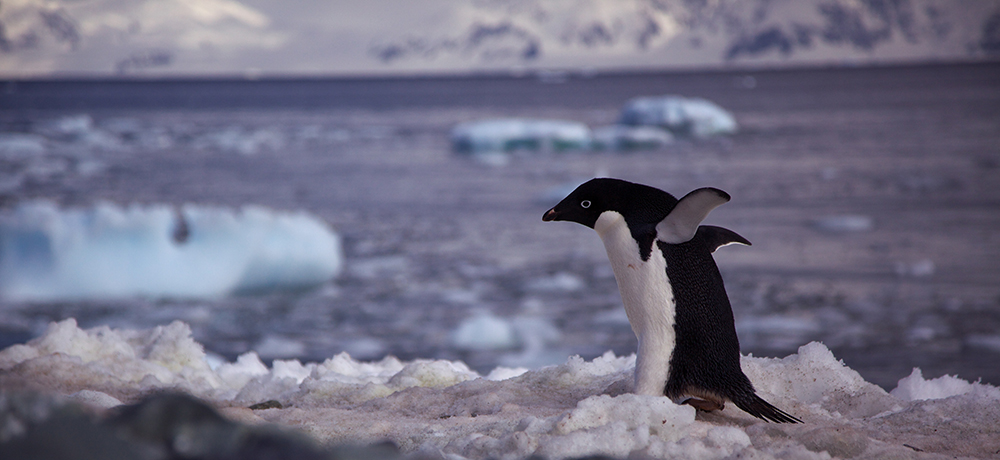The Heartland Center has just released the Winter 2017 edition of our Quarterly Occupational Safety & Health Newsletter. You can read the PDF version here, and the HTML version is available here. Please share the newsletter with your colleagues, either by printing out the PDF and posting it on your bulletin board or by sending them the link. Subscribe to our mailing list now to receive future issues, and please invite your friends to do the same!
The article below is an excerpt from the newsletter, which also features concise, informative items on NIOSH’s ladder safety app, safe winter driving, and the use of illicit drugs in the safety sensitive workforce.

This Winter, Keep Safe By Walking Like a Penguin
We all know how dangerous it can be to work on a roof or other elevated surface, but we tend to underestimate the potential consequences of falls from lower
heights. In reality, a fall of just a few feet can cause serious injury or even death. Ice and snow can make even walking on the ground a deadly risk: dozens of Americans die each year as a result of slipping on ice, and thousands are injured. With that in mind, it’s worth looking a little bit silly to stay safe. This winter, if you have to walk on potentially slippery terrain, try walking like a penguin. It could save your life.
How to Walk Like a Penguin
- Keep your hands out of your pockets! Extend them out to your sides to help you keep your balance, like you’re walking a tight rope.
- Bend your knees slightly, point your toes outward a little bit, and walk flat-footed.
- Take short, slow steps.
- With each step, keep your center of gravity above your front leg. Normally, we put our leading foot out and let it pull us forward. When you penguin walk, you want to keep your body directly above your foot as you place it.
- If you do fall backward, try to tuck your chin. That way your back, not your head, will hit the ground first.
Why Does it Work?
The way that we typically walk (with one leg in front of us and one leg trailing) is inherently unstable on slippery surfaces. Our weight pushes our feet outward, along the surface of the ice. By keeping our center of gravity directly above one flat foot, we use our own weight to pin down our foot, preventing slips and falls. Keeping our arms out not only improves our balance, it means that we can catch ourselves if we do fall.
Other tips from the CDC
- Wear shoes or boots with traction.
- Be especially careful when entering or exiting a vehicle.
- Assume that all wet or dark areas on pavement are slippery or icy.



